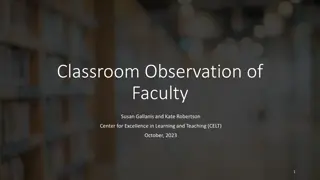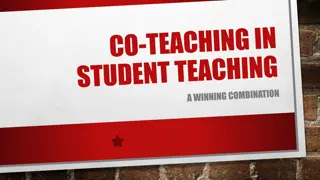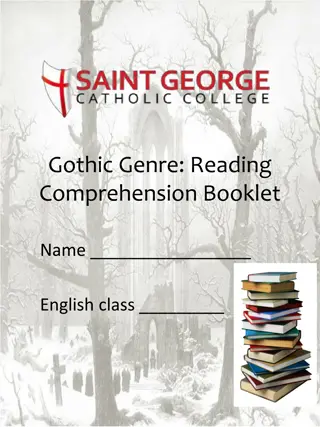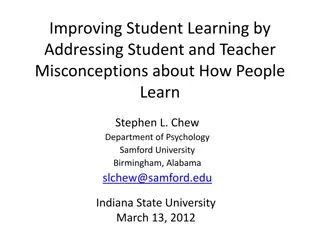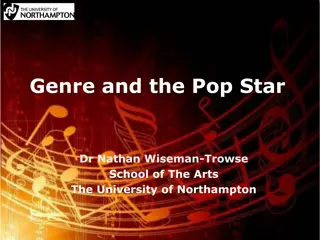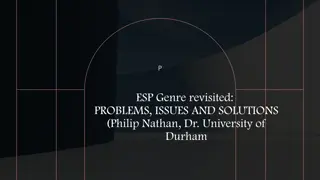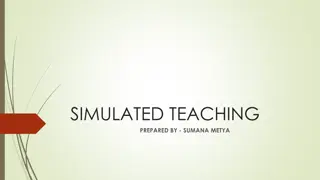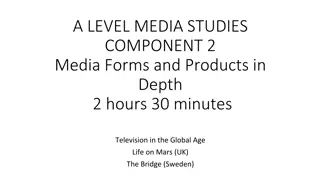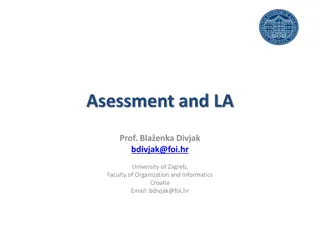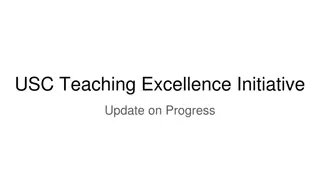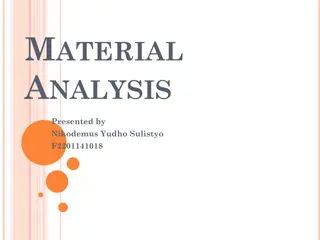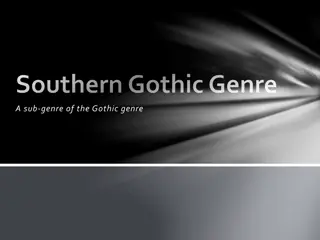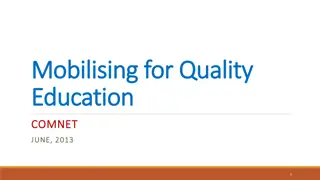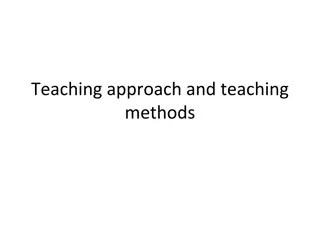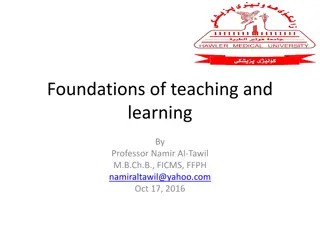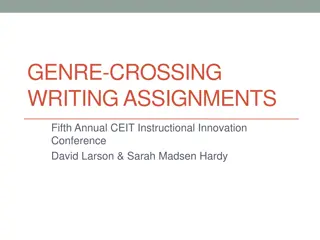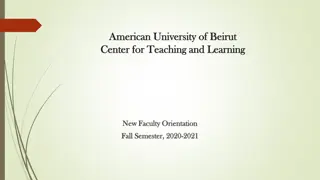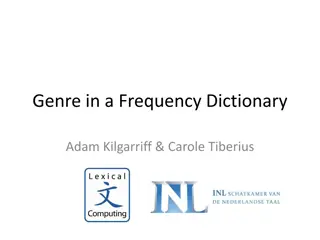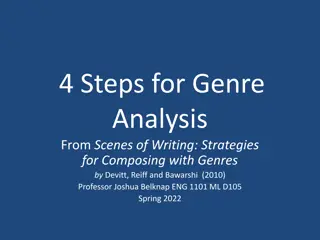
Tools-Based Approach for Teaching Writing: Genre Analysis Insights
Explore the concept of Genre Analysis (GA) as a useful tool for teaching writing, covering its components, process, and disciplinary conventions. Discover how GA can enhance writing instruction and engage students effectively in understanding various genres.
Download Presentation

Please find below an Image/Link to download the presentation.
The content on the website is provided AS IS for your information and personal use only. It may not be sold, licensed, or shared on other websites without obtaining consent from the author. If you encounter any issues during the download, it is possible that the publisher has removed the file from their server.
You are allowed to download the files provided on this website for personal or commercial use, subject to the condition that they are used lawfully. All files are the property of their respective owners.
The content on the website is provided AS IS for your information and personal use only. It may not be sold, licensed, or shared on other websites without obtaining consent from the author.
E N D
Presentation Transcript
Genre Analysis A Tools-Based Approach for Teaching Writing Molly Costanza-Robinson CTLR Writing and Teaching Retreat, August 19-20, 2019
Goals & Plan Provide enough information and experience to decide if Genre Analysis (GA) might be useful to your teaching of writing If so, provide info on how you might get started & learn more Introduce concepts and motivation for a GA approach Model approaches for conducting GA yourself & incorporating GA into the classroom Provide resources for learning more
Genre Analysis The process of using examples of expert writing in a particular genre/discipline to identify its characteristic elements AND .understand how those elements help achieve the purpose and serve the audience of the genre
Components of Genre Analysis S Science (Content) O Organization C Conventions A Audience & Purpose G Grammar & Mechanics
Components of Genre Analysis S Science (Content) O Organization ( ?) C Conventions A Audience & Purpose G Grammar & Mechanics
Conventions Disciplinary/Genre-specific Conventions Not right/wrong, just accepted & expected Use of abbrev., acronyms, symbols Formatting Use of quotations Verb tense Active/passive voice (& use of personal pronouns we )
A bar was walked into by two guys but was ducked under by a third guy. Two guys walk into a bar, the third guy ducks.
A bar was walked into by two guys but was ducked under by a third guy. Two guys walk into a bar, the third guy ducks. Violating Accepted & Expected doesn t usually turn out too well [h]umor can be dissected, as a frog can, but the thing dies in the process and the innards are discouraging to any but the pure scientific mind. EB White
Active: emphasizes the person/object performing the action We analyzed the samples. Passive: emphasizes the person/object receiving the action The samples were analyzed.
Active: emphasizes the person/object performing the action We analyzed the samples. Passive: emphasizes the person/object receiving the action The samples were analyzed. GA in action: VOICE 1. Circle any instances of active voice in Excerpt 1A, and compare your findings with a partner 2. Hypothesize why active voice may have been used in those instances, and what purpose passive voice serves elsewhere 3. Repeat step 1 on Excerpt 1B and re-evaluate your active/passive hypotheses (were they supported by the 2nd excerpt? have you refined your hypotheses?)
Writing Rules Writing Tools Rules Focus: Active/Passive In history use active voice In chem/biol (methods sections, at least), use passive voice almost entirely
Writing Tools Tools Focus: Active/Passive Passive voice is typically used To convey that the individuality of the actor (scientist, researcher) is unimportant or irrelevant to the nature of or outcome of the action (i.e., that protocols/measurements are objective and robust/reproducible regardless of who is carrying them out) Writing Rules Active voice is typically used To maximize clarity, conciseness, and reader engagement with the prose To call attention to the actor and the importance of the actor s individuality to the nature of or outcome of their action (e.g., that the protocol deviates from conventional practice; that researchers decisions could have outsize influence on findings)
Ideas for GA Implementation Begin GA with non-scholarly/non-science genres that are familiar to students and about which students have well-developed expectations (and then dash their expectations)! GA skill-building progression 1. Recognize writing element and its importance (often using non- scholarly genre) 2. Identify discipline/genre-specific pattern in use of that writing element in others expert writing 3. Discuss rationale/purpose that pattern serves (rules tools) 4. Apply rationale/purpose of that writing element to improve/fix others writing (e.g., from literature; peer review) 5. Use that feature/pattern appropriately in your/their own writing
Dogs have tails. The dogs had tails. Dogs are reported to have tails. Dogs were reported to have tails.
Organization Broad Organization: overall presence/sequence of information in the genre (e.g., main headings, IMRD) Fine Organization presence/sequence of information within sections/sub- headings of a genre Steps we need to take as writers to achieve the goals of a particular sub-section of a genre
Fine Organization of JA Intro Effective introductions achieve 3 goals: 1. Provide Foundation/Context for your research area 2. Present the Motivation for your study 3. Convey the Significance of your study
Finer Org. of JA Introduction Steps ( moves ) writers need to take to achieve 3 goals: 1. Provide the Foundation/Context for your research area 1a. Identify general research area and its importance 1b. Establish the specific topic of your study and its importance 1c. Briefly present the state-of-the-science (i.e., what is already known) related to your research questions 2. Establish the Motivation for your work 2. Identify important scientific gap(s) 3. Establish the Significance of your work 3. Show how your study objectives address or fill the stated gap(s)
GA in action: INTRODUCTION FINE ORG. Use the provided list of moves to identify/label each sentence in Excerpt 3 with the specific move it represents (e.g., write 1a, 2, etc. in the margin).
1. Provide Foundation/Context for your study Move 1a. Identify the general research area and its importance Structures Cite relevant literature throughout 1b. Establish the specific topic of your study and its importance Often convey the move 1. sequence 2. relative length 3. relative specificity 4. as-needed (dashed lines) repeats, optionality in presence/sequence 1c. Introduce state of the science specifically related to your study (i.e., what is already known) 2. Establish Motivation for your study (identify the gap ) (e.g., a question to be answered, procedure to be improved, discrepancy to be explained) Repeat, as needed for multiple gaps 3. Establish Significance of your study (show how your study fills the gap )
1. Provide foundation & context (bulk of Intro) A. Identify the area of your research & its importance B. Identify sub-topic your study & its importance Transition from a focus on what is known to science C. Describe relevant state- of-the-science (what is known about topic) Cite relevant scientific literature throughout to what is not (yet) known to science 2. State research gap(s) to how your study contributes new science 3. Show how your work fills the gap by stating study objectives
1. Provide foundation & context (bulk of Intro) Transition QUICKLY! from a general/scientific audience (more accessible to scientists outside your field, less technical, less jargon) A. Identify the area of your research & its importance B. Identify sub-topic your study & its importance C. Describe relevant state- of-the-science (what is known about topic) Cite relevant scientific literature throughout To Expert audience (highly technical, specific, sophisticated language) 2. State research gap(s) 3. Show how your work fills the gap by stating study objectives
Ideas for GA Implementation GA skill-building progression 1. Recognize writing element and its importance (often using non- scholarly genre) 2. Identify discipline/genre-specific pattern in use of that writing element in others expert writing 3. Discuss rationale/purpose that pattern serves (rules tools) 4. Apply rationale/purpose of that writing element to improve/fix others writing (e.g., from literature; peer review) 5. Use that feature/pattern appropriately in your/their own writing *
GA in action: INTRODUCTION FINE ORG. 1. Categorize the provided passages by Goal 2. For any Goals that have multiple passages, order them following the move structure provided
Goals Provide enough information and experience to decide if Genre Analysis (GA) might be useful to your teaching of writing If so, provide info on how you might get started & learn more
Write Like a Scientist 2.0 go/WLAS Robinson et al., Write Like a Chemist. OUP, 2008.
Additional Resources all readily adapted to non-chem disciplines Robinson et al., Teaching and Applying Chemistry-Specific Writing Skills Using a Simple, Adaptable Exercise. J. Chem. Educ.2009, 86, 45. Robinson et al. Using the ACS Journals Search to Validate Assumptions about Writing in Chemistry and Improve Chemistry Writing Instruction. J. Chem. Educ. 2008, 85, 650. Purdue Online Writing Lab (Purdue OWL): https://owl.purdue.edu/owl/purdue_owl.html
Example GA approach/findings re: Verb Tense
Dogs have tails. The dogs had tails. Dogs are reported to have tails. Dogs were reported to have tails. GA in action: VERB TENSE 1. Underline instances of PAST tense; Circle instances of PRESENT tense in Excerpt 1A, and compare your findings with a partner 2. Discuss whether/how the instances of past/present tense fit with your hypotheses re: the rationale/purpose for their use? 3. Repeat for statements in Excerpt 2 and re-evaluate your verb tense hypotheses (were they supported by the series of statements? have you formulated a refined rationale for when/why to use past/present tense?)
Writing Rules / Writing Tools Rules Focus: Verb Tense For Methods & Results, use past tense, except to refer to graphics For Discussion, use present tense, often hedged
Writing Rules / Writing Tools Tools Focus: Verb Tense Past tense is typically used to describe things that happened in the past (e.g., methods used, observations made, results collected) express skepticism or lower levels of (scientific) grounding/certainty (e.g., past interpretations or facts that have since been debunked or are being reconsidered) Present tense is typically used to state facts that are thought to be more generally and durably true over time (e.g., interpretations/explanations for observations/results) express higher levels of (scientific) grounding/certainty, but in science will still often be coupled with hedging language

